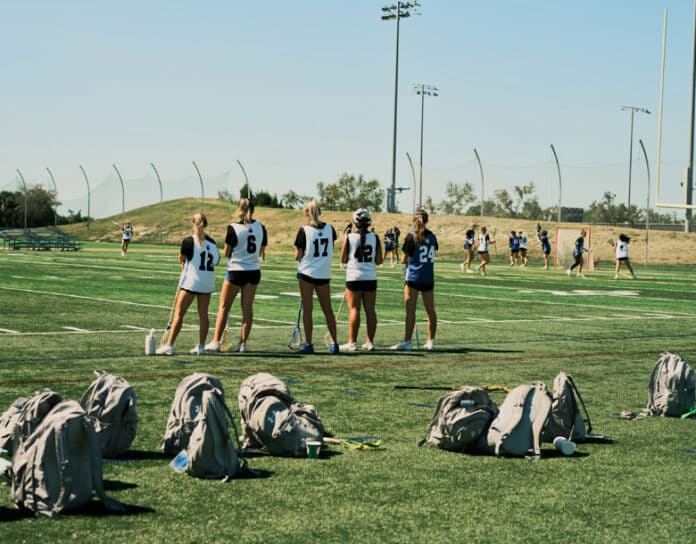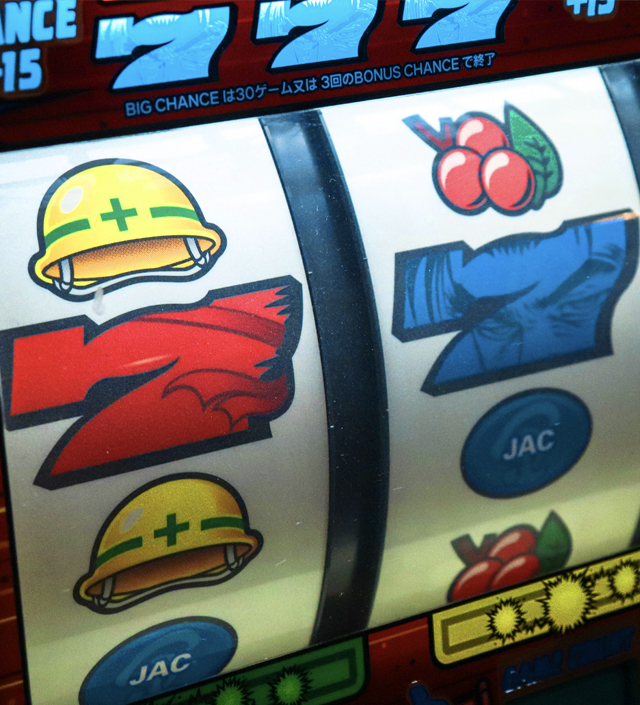Like many youth sports fathers, Jon Bash can summon his son’s early baseball career on his phone. There are video clips of Jesse as a boy at summer camps and on a road trip to Cooperstown, New York, to play in a tournament in the shadow of the Hall of Fame. They show Jesse’s towering home runs in high school, as well as his many hours in the batting cage.
One of Bash’s most cherished clips is a video of Aaron Judge’s swing coach extolling Jesse’s work ethic to his own social media followers. His son has averaged 70 games a year over the past decade between school and travel teams. To keep playing, Jesse, 19, took a postgraduate year at a Florida sports academy.
The costs of all the training sessions, tournaments and equipment have added up for Bash, but he has no regrets spending money chasing his son’s baseball dreams.
“He’s my only child, and like most parents, you want to do anything you can for your kid,” said Bash, who runs a diner on the Upper East Side of Manhattan.
It’s no wonder that sports dads like Bash have caught the attention of Wall Street investors.
Private equity titans Josh Harris and David Blitzer are among those who see a big opportunity. Over the past three years, Harris and Blitzer used money from their family foundations to start Unrivaled Sports, which has been buying baseball camps, flag football fields and youth leagues to assemble one of the largest collections of youth sports properties in the country. One of their acquisitions is a baseball complex in Cooperstown where 12-year old ballplayers flock every summer, as a sort of rite of passage.
“We’re in the early innings,” Harris and Blitzer said in a statement. “Our ambition is to build the most trusted, expansive and impactful youth sports platform in the country.” Harris, one of the founders of Apollo Global Management, and Blitzer, who is a senior executive at Blackstone, also own professional sports teams such as the Philadelphia 76ers.
The youth sports industry, according to the Aspen Institute, generates about $40 billion in annual revenue, dwarfing other forms of entertainment. Last year, for example, the domestic movie box office grossed about $8.7 billion.
About 60 million children play sports, and the average U.S. sports family spent $1,016 on its child’s primary sport in 2024, a 46% increase since 2019, according to the Aspen Institute’s latest parent survey in partnership with Utah State University and Louisiana Tech University.
That’s a far cry from the days when youth sports were dominated by locally run offshoots of nonprofit organizations like the Catholic Youth Organization, Pop Warner and Little League Baseball.
But over the years, youth sports have become more national in scope. Parents watched the emergence of Tiger Woods, whose father, Earl, pushed him to play golf as a toddler, and saw how specializing in a sport was a ticket to admission to a prestigious college, a scholarship or maybe a paycheck.
The entry of big money into youth sports has raised concerns that the cost of playing youth sports could rise further out of reach for many American families. To increase profits for their investors, these firms could raise fees for tournaments, rink time and other assets they’ve acquired.
Unrivaled Sports said that it was mindful of the costs of its offerings and that it provided “free and subsidized opportunities” at its facilities.
For many families, the money they spend on sports is an investment in their child’s future. Roughly 2 in 10 youth sports parents think their child has the ability to play Division I college sports, and 1 in 10 thinks his or her child could reach the professional ranks or the Olympics, according to the Aspen Institute survey.
The market has grown to meet these aspirations.
“Money chases money,” said Tom Farrey, founder and executive director of the Aspen Institute’s Sports & Society Program. “There is a great demand for kids to play sports, and parents will spend money they don’t have.”
America’s obsession with youth sports is attracting investments from private equity and other large investors across the world. Last year, KKR bought Varsity Brands, which makes sports uniforms and organizes cheerleading competitions, for $4.5 billion. Waud Capital Partners invested in TeamSnap, a platform that coaches, players and parents use to communicate and schedule games, tournaments and payments.
Two years ago, a fund held by EQT, a Swedish private equity firm, acquired IMG Academy, a sports-focused boarding school in Bradenton, Florida, in an all-cash deal valued at $1.25 billion. Another private equity firm, Patricof, bought a smaller stake in IMG on behalf of more than 50 star athletes, including Jason Kelce, Michelle Wie and Dak Prescott.
Spread over 400 acres, the academy has 63 tennis courts, 32 fields, 73 courts for basketball and volleyball and more than 100 psychologists, nutritionists, trainers and other specialists on staff. In one facility, a map of the United States includes pins where graduates are playing college sports.
The school has 1,500 students, and it costs about $85,000 a year to attend. IMG also hosts less expensive summer camps and online coaching programs that reach tens of thousands of young athletes.
As a high school freshman in Minnesota, Anna Johannson knew that her skills as a volleyball player could help her get into a good college. The next year, she was approached by a coach from IMG, which was starting a volleyball program. After some persuasion, her parents agreed to pay for her to attend the boarding school.
There, she lived in a dorm with teammates, worked with coaches and trainers and took advantage of career advisers, nutritionists and other high-end tools more commonly found in top collegiate programs.
Johannson also spent time in the school’s “mind lab,” where one morning in March she worked on an exercise that involved rearranging blocks to match the patterns and colors on cards.
The exercise, Match Madness, was intended to develop spatial reasoning and the ability to mentally manipulate objects just as athletes need to process positioning and movement on the court.
“I still train with my old coaches from Minnesota, and they look at me play and how far I’ve come and they’re like, ‘There’s no way you could have done this without going to IMG,’” said Johannson, who will attend the University of New Mexico in the fall.
Critics argue that for-profit enterprises can intensify the gap between families with means and millions of other children who rely on public parks and recreation departments that struggle for money, play space and coaches.
This year, a team of researchers from Ohio State University and Oregon State University found that success in competitive youth sports might have more to do with money and opportunity than with talent and hard work.
The researchers determined that 70% of 10th-grade high school students from families with high socioeconomic status played a high school sport, while only 43% of 10th graders from low socioeconomic status families played.
At the Ripken Experience in Aberdeen, Maryland, a youth baseball complex that Harris and Blitzer’s firm bought in 2023, teams pay $3,145 to enter four-day tournaments that feature 48 teams from around the country.
Families also pay for lodging — a room at the hotel next to the replica of Camden Yards can cost $300 or more a night — meals, gas and tolls, and excursions, like a trip to an Orioles game in Baltimore. Many families spend several thousand dollars a year traveling to tournaments, on top of buying helmets, bats and other equipment. The complex was developed by Cal Ripken Jr. and members of his family; Ripken, a former Baltimore Orioles star, still retains a stake.
Last month, Erik Krok took time off from work to drive his family from Smyrna, Delaware, so his 11-year-old son, Oakley, could play at Ripken.
Krok and his wife, Britni, said the Ripken experience was worth the price because the facilities were maintained well. Players bounce among nine fields, 15 batting cages, 16 bullpens and a food court as their parents lounge on lawn chairs. (Families unable to make it can watch games on a streaming service.) The teams play on smaller replicas of major league parks. (Wrigley Field, for example, has ivy on the outfield fence like the real park in Chicago.)
But the Krok family was mindful of the cost. Britni Krok saw a nice quick-dry shirt in the merchandise shop, but opted not to buy it because of the $95 price tag.
“I’ll keep going as long as he does, but I’m not going to put my family into bankruptcy,” Erik Krok said with a laugh.
Specialization in youth sports can have long-term consequences, like children burning out and leaving the game because of the pressure.
Joe Bortnick, a native of Kansas City, Missouri, chased his dreams to play high-level hockey as soon as he learned to skate. When he was 13, he spent most weekends driving to Des Moines because Kansas City did not have a team that USA Hockey recognized as elite. Now 20, he recalled the anguish of deciding whether to live with a teammate’s family during the next school year.
“I was traveling all the time,” he said. “I didn’t get to hang out with friends. I could never go to the movies. It was pretty depressing. So I chose to stay home and play at a lower level.”
Jesse Bash appreciates the sacrifices his father and mother made to give him top class instruction and experiences. Beyond the investment, it meant his father had to spend days and weeks away from his Manhattan diner. Lisa Bash, a pharmacist, worked extra days.
Jon Bash declined to say how much he had invested in his son’s sports dreams over the years. But the sacrifice was worth it, he said, because his son will play at the college level, at William Paterson University, in the coming school year.
“He loves baseball,” Bash said. “It’s his happy place.’’
c.2025 The New York Times Company. This article originally appeared in The New York Times.







